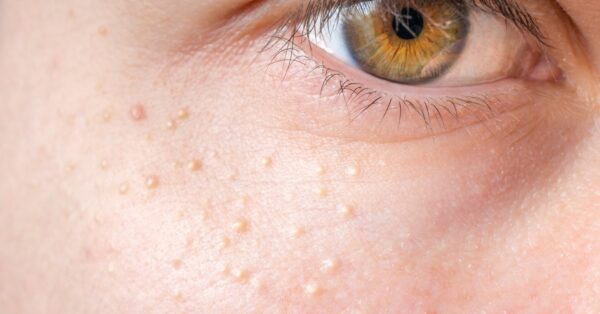Milialar disease is a rare and enigmatic ailment, primarily due to its infrequency. This article offers comprehensive insights into this medical condition, featuring guidance and advice from healthcare experts. Here, you’ll find all the essential information, ranging from symptoms to potential remedies.
What is Milialar Disease?
Let’s begin with the basics. Despite being frequently mispronounced as “miliary disease,” Milialar disease is a rare genetic disorder that primarily affects the skin and can have significant consequences. While it may not be as well-known as some other conditions, it is crucial for individuals grappling with it to gain a comprehensive understanding of the illness.
Genetic Basis
An essential aspect of this disease is its hereditary nature. Milialar disease is an autosomal recessive disorder, meaning that both parents must carry the mutated gene for their child to be affected.
Revealing Symptoms
-
Skin Manifestations
The skin serves as the primary organ affected by Milialar Disease. The condition derives its name from the tiny, elevated, reddish-brown spots that resemble millet seeds and form on the skin’s surface. These patches often lead to irritation and discomfort.
-
Systemic Complications
Milialar Disease has systemic consequences, meaning it can impact more than just the skin. Potential complications may affect the lungs and liver, underscoring the critical importance of a timely diagnosis and appropriate treatment.
Diagnosis and Medical Assessment
-
Seeking Medical Attention
If you or a loved one exhibit symptoms that could be attributed to Milialar Disease, seeking prompt medical attention is crucial. Early diagnosis and treatment can significantly improve the prognosis.
-
Genetic Testing
Genetic testing often plays a pivotal role in the diagnostic process. This involves an investigation into the specific genetic variants responsible for Milialar Disease.
Exploring Treatment Options
-
Symptomatic Relief
While there is currently no known cure for Milialar Disease, various treatments exist to help manage its symptoms. Topical lotions and ointments can provide relief from skin discomfort.
-
Multidisciplinary Approach
For the management of systemic issues, a multidisciplinary approach is typically necessary. Consulting specialists in respiratory and liver health, as appropriate, is essential.
Coping with Milialar Disease
-
Emotional Support
Coping with the emotional challenges posed by a rare condition can be arduous. Seek support from trusted individuals, whether they be friends, family, or members of a formal support group.
In Conclusion
Milialar disease is a genetic disorder that, though uncommon, can lead to systemic symptoms due to its distinctive skin manifestations. While there are undoubtedly challenges, early diagnosis and a multidisciplinary treatment approach can significantly enhance the quality of life for those contending with this condition. Together, by staying informed about the latest research and offering emotional and practical assistance, we can contribute to creating a more compassionate and accepting world for individuals with Milialar Disease.
Frequently Asked Questions (FAQs)
-
Can Milialar Disease be prevented?
Unfortunately, as a genetic disorder, there is no definitive way to prevent it. Genetic counseling can aid individuals in understanding their risk.
-
Is Milialar Disease contagious?
No, Milialar Disease is not contagious; it is a genetic condition and cannot be transmitted through contact.
-
Are there any experimental treatments for Milialar Disease?
Research into potential treatments is ongoing, but as of now, there are no widely accepted experimental treatments.
-
Can Milialar Disease be life-threatening?
While Milialar Disease itself is not typically life-threatening, its systemic complications can be serious if left untreated.
-
Is Milialar Disease more common in certain populations?
The prevalence of Milialar Disease can vary among different ethnic groups, with higher rates reported in certain populations.
-
How can I support someone with Milialar Disease?
Offering emotional support, assisting with daily tasks, and educating yourself about the condition can be valuable ways to support someone with Milialar Disease.

